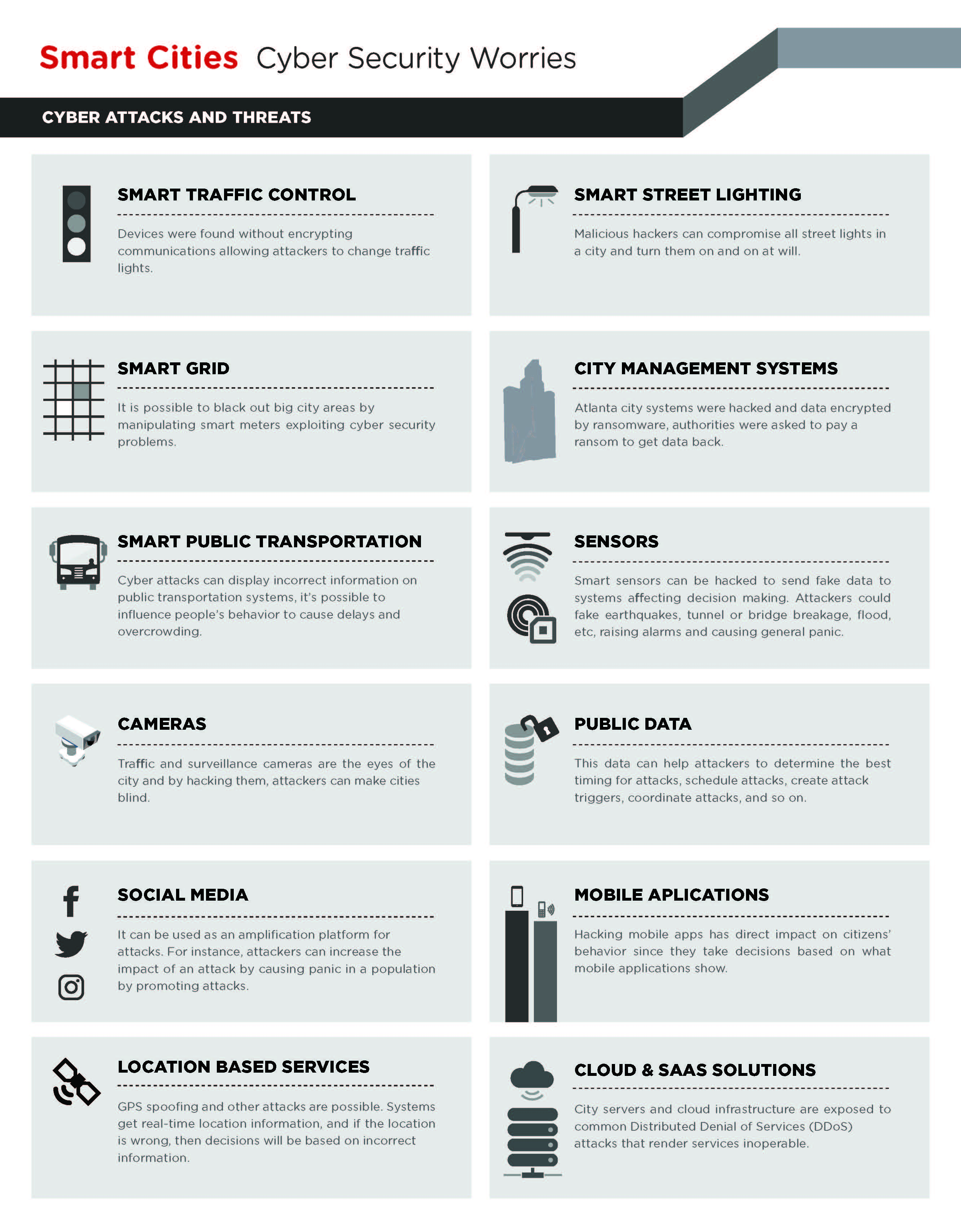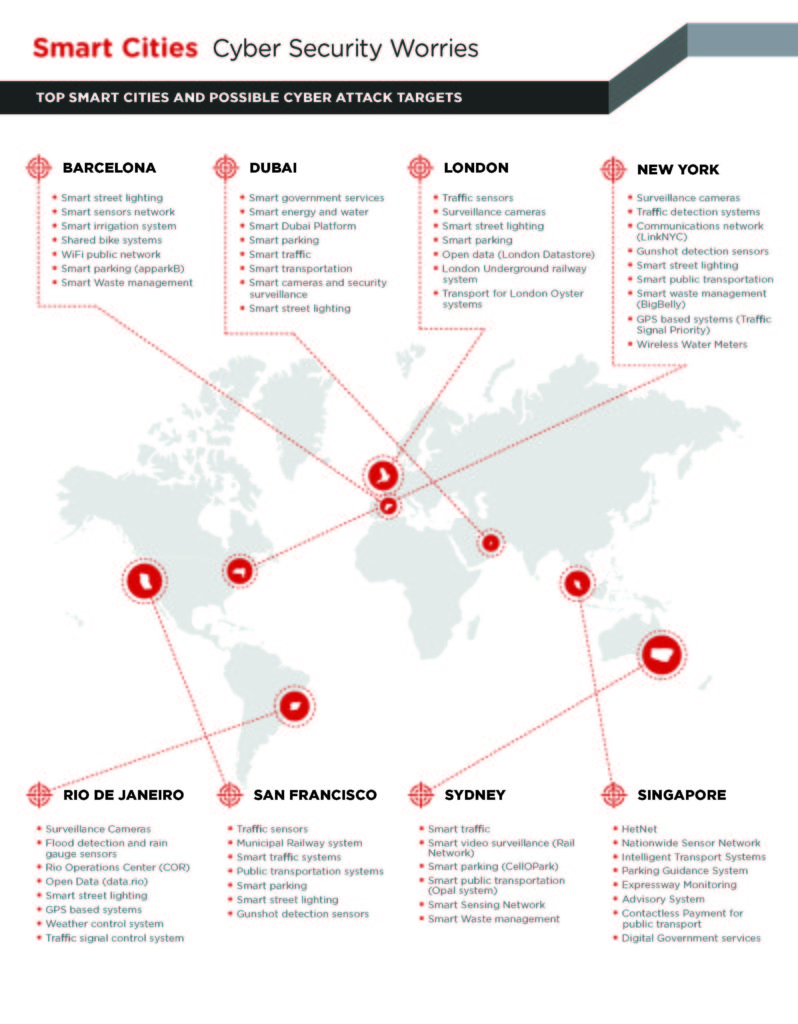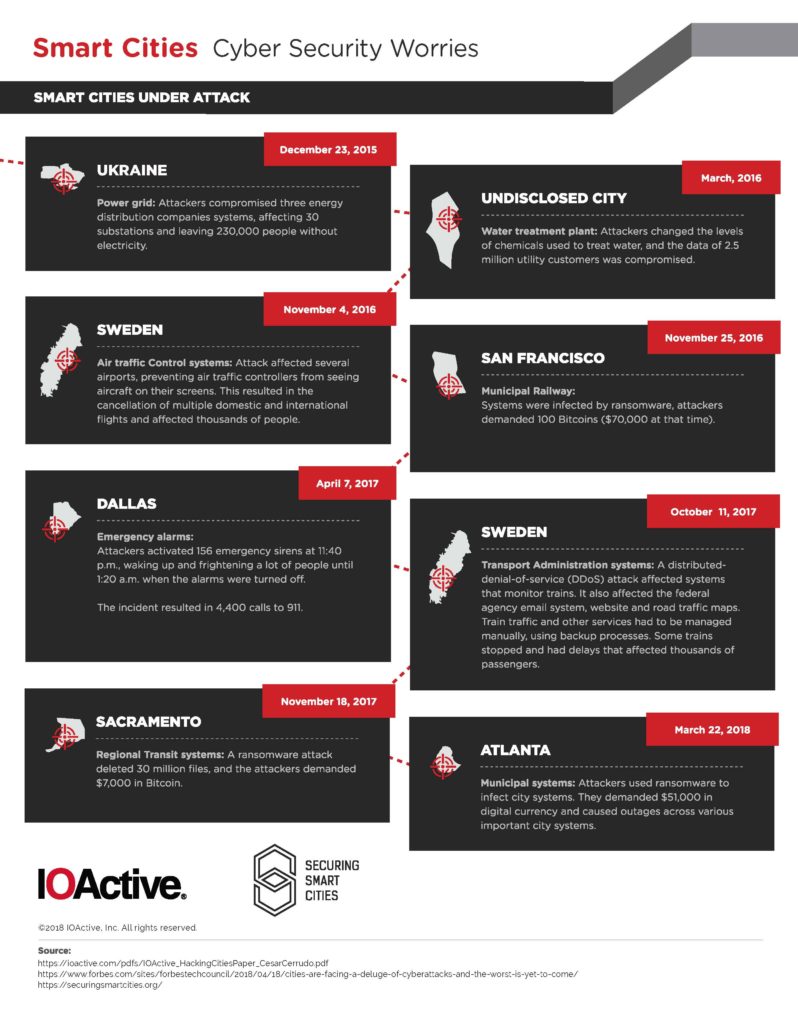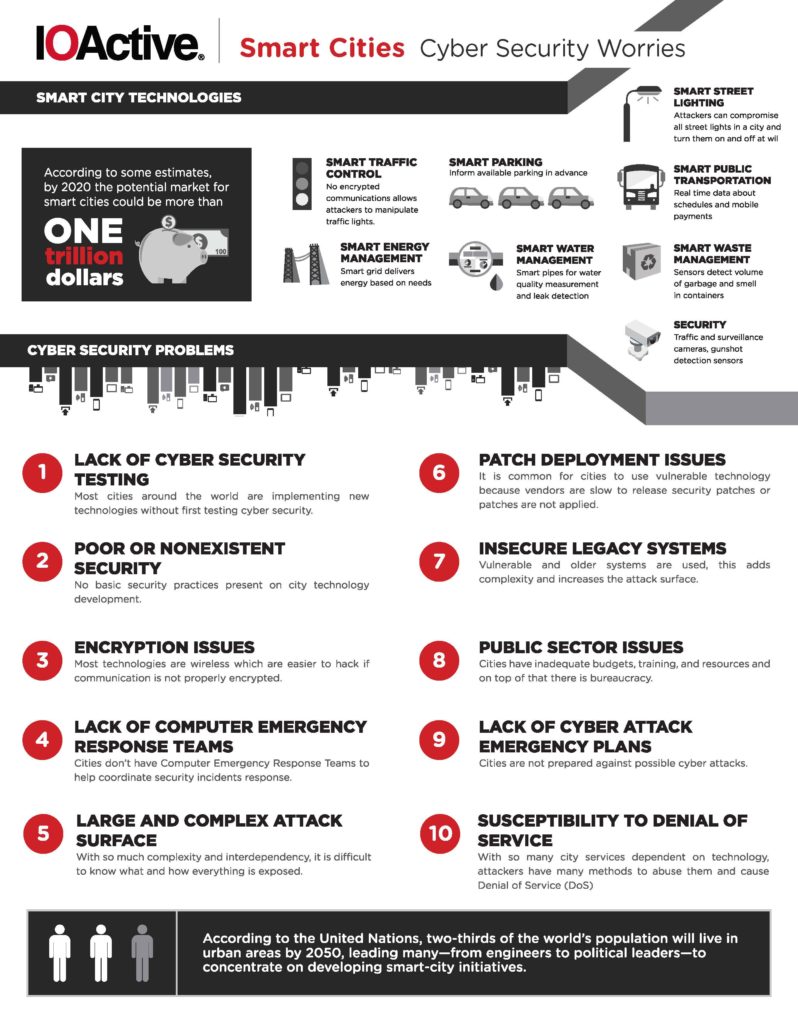There are a variety of potential benefits for cities that embrace technology. “Smart cities” can implement technology to streamline functionality and improve efficiency in a number of ways from detecting when a public parking lot is full to enabling remote wireless control of traffic signals. Of course, connecting the infrastructure of a city and making it remotely accessible and manageable also exposes it to potential risk and malicious activity.
That’s why IOActive founded the Securing Smart Cities Initiative in 2015. Securing Smart Cities is a not-for-profit global initiative that aims to solve the existing and future cybersecurity problems of smart cities through collaboration between companies, governments, media outlets, other not-for-profit initiatives and individuals across the world.
As IOActive has worked with its Fortune 1000 global clients to harden their IoT (internet-of-things) and IIoT (industrial internet-of-things) devices and networks, researchers have also noted a number of trends and issues that relate to securing and protecting smart cities.
[the_ad id=”7327″]IOActive published an infographic that summarizes the current state of smart city progress, and the cybersecurity issues and concerns smart cities currently face. Some of the key points from the infographic include:
- The top 10 cybersecurity problems across smart cities including DoS attacks, encryption issues, vulnerable legacy systems, lack of CERT teams and more;
- The top cybersecurity worries including ransomware attacks, unencrypted traffic control systems, vulnerable smart meters/smart grids, hacked cameras and mobile apps, fake data pushed to smart sensors, and more;
- The top smart cities and possible cyber attack targets including Barcelona, Dubai, London, New York, Rio de Janeiro, Sydney, Singapore and San Francisco; and
- The top smart cities under attack including Atlanta, Dallas, Sacramento, San Francisco, Ukraine and Sweden.
Check out the infographic below or click to view it in full size from the original source.



- Rethinking Cybersecurity in the Age of AI and Digital Twins - August 25, 2025
- 10 Clever Tech Gadgets Every Student Will Actually Use - August 21, 2025
- The Evolving Face of Ransomware — and How We Can Stay Ahead of It - August 15, 2025





Comments are closed.